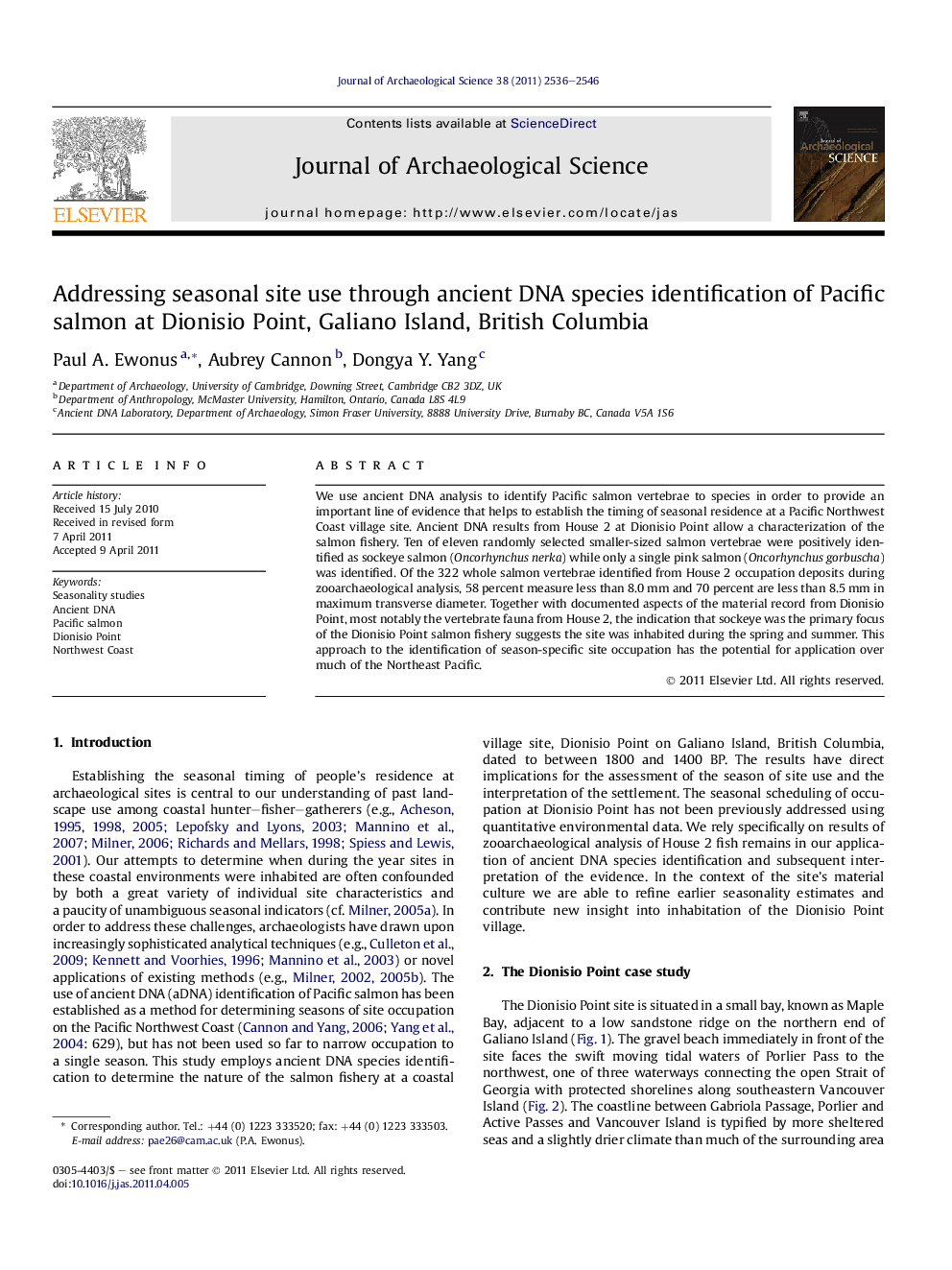| Article ID | Journal | Published Year | Pages | File Type |
|---|---|---|---|---|
| 1035704 | Journal of Archaeological Science | 2011 | 11 Pages |
We use ancient DNA analysis to identify Pacific salmon vertebrae to species in order to provide an important line of evidence that helps to establish the timing of seasonal residence at a Pacific Northwest Coast village site. Ancient DNA results from House 2 at Dionisio Point allow a characterization of the salmon fishery. Ten of eleven randomly selected smaller-sized salmon vertebrae were positively identified as sockeye salmon (Oncorhynchus nerka) while only a single pink salmon (Oncorhynchus gorbuscha) was identified. Of the 322 whole salmon vertebrae identified from House 2 occupation deposits during zooarchaeological analysis, 58 percent measure less than 8.0 mm and 70 percent are less than 8.5 mm in maximum transverse diameter. Together with documented aspects of the material record from Dionisio Point, most notably the vertebrate fauna from House 2, the indication that sockeye was the primary focus of the Dionisio Point salmon fishery suggests the site was inhabited during the spring and summer. This approach to the identification of season-specific site occupation has the potential for application over much of the Northeast Pacific.
► We assess the season of site use at Dionisio Point using ancient salmon DNA species data. ► Results of House 2 zooarchaeological analysis provide important context. ► Smaller-sized vertebrae reveal a 10:1 ratio of sockeye to pink salmon. ► An early spring to summer village occupation is therefore indicated. ► Seasonality determination should be possible at similar sites containing Pacific salmon remains.
